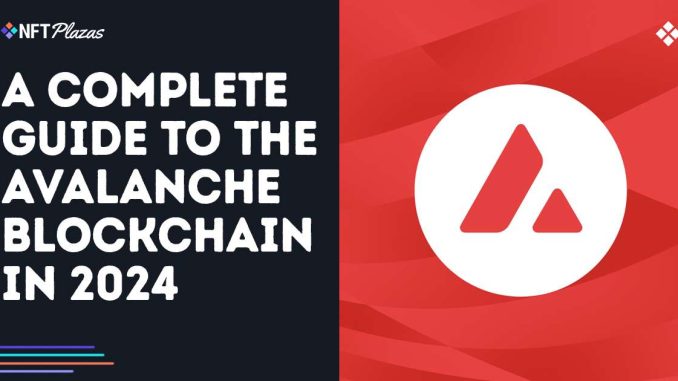
Layer-1 blockchains are forever becoming faster, more efficient and more capable – and one particular Layer-1 has attracted particular attention in 2024 – Avalanche.
With solid performance as its guiding mantra, Avalanche – otherwise known as the Avax Network – has gained a firm foothold in the blockchain industry – especially in NFT art, culture and blockchain gaming – with its unique multi-chain architecture making it a top choice for developers of some of the most promising decentralized applications.
Avalanche has successfully created a niche for itself in the blockchain space and is continuing to grow – but what exactly sets Avalanche apart, and why is it worth looking to?
Here’s our complete guide to the Avalanche blockchain in 2024.
What is Avalanche?
Avalanche was developed by Ava Labs, a company led by Dr. Emin Gün Sirer, a renowned figure in the computer science and blockchain industries.
Unlike many other blockchains, Avalanche uses a unique structure of three core chains – X-Chain, C-Chain, and P-Chain – each of which serves distinct functions within the ecosystem:
X-Chain: manages digital assets, using Avalanche’s consensus protocol to enable fast and efficient transactionsC-Chain: manages smart contracts, being fully Ethereum Virtual Machine (EVM)-compatibleP-Chain: manages network validators and staking, and it’s where custom Layer-2’s can be created to enhance scalability and flexibility across the network
Avalanche’s native token, $AVAX, powers the ecosystem – playing a role in everything from transaction fees to staking rewards and governance. The blockchain’s compatibility with Ethereum, its growing ecosystem, and its appeal to developers have gone a long way to cement its position as a serious player in the wider Web3 industry.

How does Avalanche work?
Avalanche’s design is all about flexibility and performance.
Its architecture allows developers to create custom Layer-2 blockchains, called subnets, that can operate either independently or in conjunction with the main network. This multi-chain approach gives Avalanche a unique edge, allowing for tailored blockchain solutions with specific consensus mechanisms and governance models to be created at pace.
Any $AVAX fees paid in running the blockchain are burned, gradually reducing the token supply and adding a deflationary aspect to the ecosystem. When combined with high transaction speeds and low costs, Avalanche becomes an attractive option to developers, users and traders alike.
Whether developers are looking to build a blockchain game, an NFT collection, or a service – such as a decentralized exchange (DEX), a lending platform, or an NFT marketplace, – Avalanche’s straightforward compatibility with Ethereum is an undeniable draw, and a key factor in the network’s ongoing success.

The History of Avalanche
Ava Labs, the developers of Avalanche, raised $42 million USD in a series of $AVAX token sales, demonstrating strong interest and confidence in the vision and potential of the blockchain.
Following this, Avalanche launched its mainnet in September 2020 – and since then, Avalanche has rapidly expanded, attracting a wide range of developers, projects, and users year on year.
By the end of 2023, Avalanche had solidified its position as one of the top blockchain platforms, with a significant amount of total value locked in its DeFi protocols and a vibrant ecosystem of dApps.
Some of the most notable projects on Avalanche include games such as Off The Grid, Shrapnel and Fableborne, and services such as the GMX exchange, the Trader Joe DEX, and the Joepegs NFT marketplace.
Looking to the future, Avalanche continues to focus on expanding its capabilities and ecosystem. The ongoing development of subnets and new features is expected to drive further growth and adoption, positioning Avalanche as a critical infrastructure for the decentralized future.

What’s next for Avalanche?
Avalanche is more than just another Layer-1 blockchain; it’s a versatile platform designed to meet the diverse needs of modern decentralized applications.
With its unique multi-chain architecture and custom subnets, it offers developers unparalleled flexibility and control, with ample scalability, security, and customization to boot, helping to set it apart in an increasingly crowded industry.
Whether it can withstand the ongoing surge of successful Ethereum Layer-2 technologies remains to be seen, but as development on Avalanche continues, it will be exciting to see how it advances, and what may lay ahead in its future.





Be the first to comment